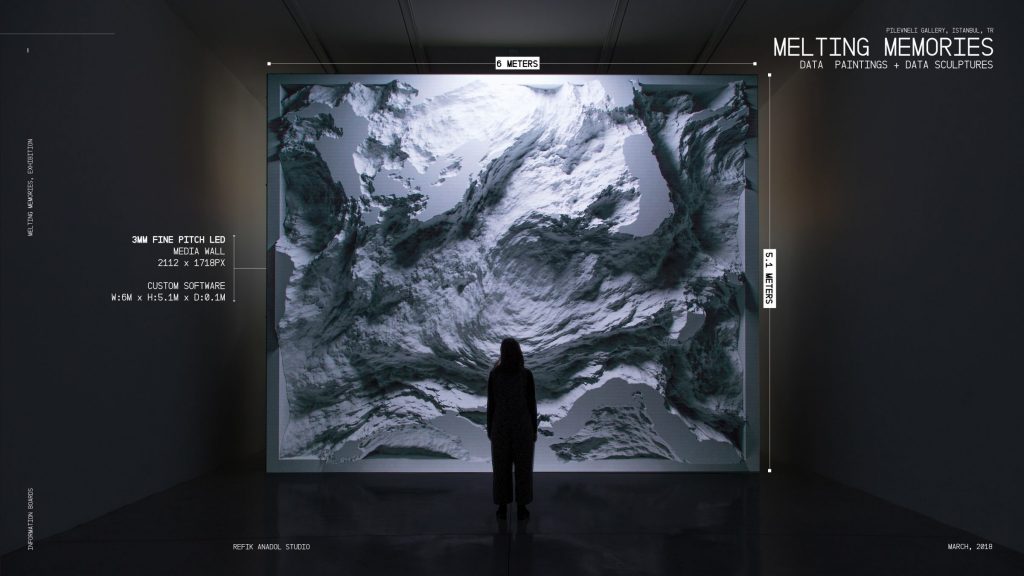
Melting Memories
I heard of Refik Anadol when my friends coerced me into attending one of his exhibits at the Wood Street Gallery in Downtown, Pittsburgh in February 2019. That installation involved being in an infinity room with light projections bouncing around the room.
This project is slightly different. Melting Memories is a data sculpture, mostly displayed on a LED media wall. Its purpose is to enable visitors to experience aesthetic interpretations of motor movements inside a human brain in the act of remembering. Data is gathered on the neural mechanisms of cognitive control from an electroencephalogram that measures changes in brain functions over time.
I admire that the artists were able to make data beautiful, something usually represented as just charts and numbers. Art is not always just paint and colors, but it could be able to represent something about the human race, and I find that fascinating. I also really admire how they were able to make something displayed on an LED screen look incredibly 3-dimensional. It makes it emotional.
From the Refik Anadol Studio, there were seven people involved in designing and developing the piece. Then they had someone for sound design, and two for software development. They had scientific support from UCSF / Neuroscape Lab members, and Adam Gazzaley, M.D., Ph.D.
The artist needed to utilize new technology to be able to gather neural activity using an electroencephalogram, and a 32-channel Enobio for data collection. They also needed to come up with a way of transposing EEG data in to procedural noise forms, so had to develop FieldTrip, an open source GPU library.
I think the project points to the future of data-driven art, that data is able to generate visually beautiful artifacts, making one rethink how one can process data and what we can learn from that. Then we could possibly project this on the facade of a building, or CNC it to make physical artifacts that are not necessarily existing digitally.
![[OLD FALL 2020] 15-104 • Introduction to Computing for Creative Practice](wp-content/uploads/2021/09/stop-banner.png)